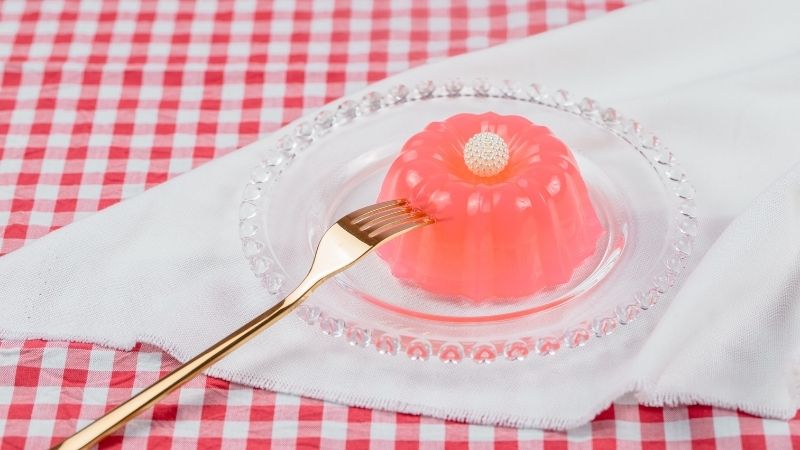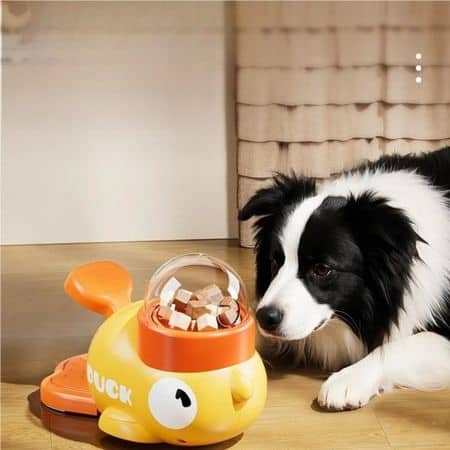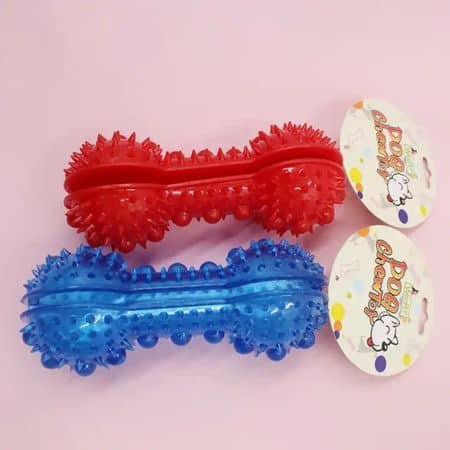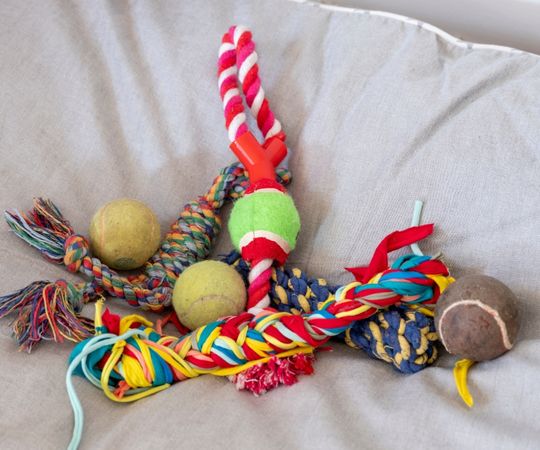
Pet owners know this moment well—your dog’s soulful eyes lock onto your jiggling Jello cup, and suddenly, sharing feels inevitable. While some human foods like chicken or apple slices make perfect pup-safe treats, others—like Jello—come with hidden risks. So, can dogs eat Jello safely? The short answer: It’s complicated.
In this article, we’ll uncover the truth about Jello’s ingredients, potential risks, and fun, safer swaps to keep your furry friend safe and healthy.
What does Jello contain?
Jello is mainly made of gelatin, sugar, and various artificial additives. Some of these ingredients can be harmful to dogs, especially in large amounts or certain forms.
Gelatin
Gelatin is the main ingredient in Jello. It comes from animal collagen, usually from cows or pigs. This protein helps Jello keep its shape and gives it a smooth texture.
For dogs, plain gelatin can be safe in small amounts. However, gelatin in Jello is often mixed with other ingredients that might not be good for dogs.
Sugar and Sweeteners
Jello’s formulation typically relies on a substantial sugar content for its taste. The industry also produces sugar-free versions that use alternative sweeteners, such as xylitol, to maintain flavor while adjusting texture. These sweeteners enhance taste and help achieve the desired consistency.
Artificial Flavors / Colors / Preservatives
Modern Jello products incorporate synthetic flavors, certified colorants, and chemical preservatives to achieve:
- Standardized sensory characteristics (flavor/color)
- Extended shelf stability
- Batch-to-batch consistency
These food-grade additives undergo rigorous safety testing for human consumption, though their compositions vary globally by regulatory standards.
Is Jello Safe for Dogs?
If you’re wondering whether your dog can eat jello, the short answer is no. Jello is generally not recommended for dogs. While gelatin, a main ingredient in Jello, is not toxic to dogs—and is even used in some dog-friendly treats because it’s easy to digest and supports joint health—most store-bought Jello is unsafe for them. Regular Jello contains high sugar content and artificial flavors, which can be harmful. Even worse, sugar-free Jello with xylitol is extremely dangerous for dogs and must be avoided at all costs!
| Ingredient | Risk to Dogs |
|---|---|
| Gelatin | Safe in small amounts |
| Sugar | Can cause health issues |
| Artificial Flavors | Possible digestive problems |
| Xylitol | Toxic, emergency risk |
If your dog accidentally eats Jello, watch for signs of illness such as vomiting, diarrhea, or weakness. Call your veterinarian immediately if you suspect xylitol poisoning.
Potential Risks of Feeding Jello to Dogs
Jello may seem like a harmless treat, but it can cause several health problems for your dog. Next, I’ll detail the specific dangers that jelly can pose.
Tooth Decay, Obesity, Diabetes
The sugar content in jelly poses the most significant health risks. Firstly, sugar doesn’t just cause dental cavities in humans – it equally leads to tooth decay in dogs. More critically, feeding your dog excessive sugar not only increases calorie intake (a direct path to obesity) but also causes blood sugar levels to spike, significantly elevating diabetes risk. Notably, obesity itself is a major contributor to diabetes and other health problems. If your dog already has diabetes, sugar can make their condition worse and harder to manage.
Meanwhile, sugar-free versions of Jello that contain artificial sweeteners are highly toxic to dogs, since they can cause a dangerous drop in blood sugar and liver failure.
Allergic Reactions
Most commercial Jello products contain artificial colors, flavors, and preservatives that can cause problems. These additives may trigger allergic reactions in some dogs, leading to symptoms like itching, skin irritation, vomiting, or diarrhea. Certain synthetic dyes (such as Red 40, Yellow 5, and Blue 2) have also been linked to long-term health concerns in animals, including potential hyperactivity, immune system issues, and even cancer in extreme cases.
Choking Hazard
Jello’s texture is soft but gelatinous and sticky. This can create a choking risk, especially for small dogs or those who tend to swallow food without chewing. If pieces of Jello clump together in your dog’s throat, it may cause blockage or coughing fits. Always watch your dog closely when giving new treats and serve only small, manageable bites.
Digestive Issues
Many dogs have sensitive stomachs that react poorly to Jello’s ingredients. Even if your dog isn’t allergic to Jello, its artificial ingredients and high sugar levels can still wreak havoc on their digestive system. Many dogs experience stomach pain, bloating, or excessive gas after eating Jello. The unnatural additives can disrupt gut bacteria, leading to loose stools or diarrhea. While plain gelatin is gentle on digestion, the extra sweeteners, dyes, and preservatives in Jello make it harder for dogs to process.
What to Do If Your Dog Eats Jello
If your dog eats jello, the first step is to remove any leftover jello immediately. This helps prevent your dog from eating more of the product.
Next, watch your dog closely for any signs of illness. Symptoms to look for include vomiting, weakness, diarrhea, or lethargy. These signs may mean your dog is having a bad reaction to the ingredients in the jello.
It is extremely important to check ingredients instantly for toxic artificial sweeteners like xylitol – a substance that can trigger seizures or cause dangerously low blood sugar.
If you notice any unusual symptoms, contact your veterinarian right away. Even if the symptoms seem mild, it is better to be safe and get professional advice.
Avoid feeding your dog jello in the future. If you want to give your dog a gelatin treat, look for plain, dog-safe gelatin products without added sugars or harmful ingredients.
Healthier Alternatives
There are safer ways to offer gelatin treats or other snacks that are good for dogs.
Dog-Safe Treats
Keep your dog safe by choosing dog-safe treats. You can give your dog natural treats like small slices of carrot, apple, or blueberries. These fruits are safe, low in calories, and provide vitamins and fiber. You also have options like store-bought treats specifically made for dogs instead of human desserts. Look for ones labeled dog treats that use natural ingredients and contain no sugar or artificial flavors.
Keep in mind that treats should not make up more than 10% of your dog’s daily food intake to avoid upset stomach or weight gain.
DIY Gelatin Dog Food
While flavored or store-bought Jello should always be avoided for dogs, you can safely offer gelatin as a treat by making it at home. Plain, unflavored gelatin—free from sugar, artificial sweeteners, and dyes—is a pet-friendly option that avoids harmful additives while providing potential joint benefits.
To prepare, dissolve unflavored gelatin in warm water or low-sodium broth. You can mix in small pieces of dog-safe fruits like blueberries or apples (without seeds). Pour the mixture into molds or trays and chill until firm. Here are the detailed steps:
- Dissolve 1 packet of unflavored gelatin in ½ cup of warm water or low-sodium chicken/beef broth.
- Stir thoroughly until fully dissolved (no clumps).
- Optional: Mix in diced dog-safe fruits (e.g., mashed banana, seedless watermelon, or blueberries) or a spoonful of pure pumpkin purée.
- Pour into silicone molds or a shallow tray (ice cube trays work well).
- Chill for 2+ hours until firm.
- Cut into bite-sized pieces based on your dog’s size.
These gelatin treats support joint health due to their collagen content. Always serve in moderation, and check with your vet before adding new foods to your dog’s diet.
Upgrade Treats with Interactive Fun!
Now that you know which treats are safe for your pup, why not make snack time even better? Instead of just handing out goodies, level up the fun and turn snacks into a brain-boosting adventure with pet food dispensing toys. Designed to engage your pup’s natural instincts, these interactive toys slow down eating, reduce boredom, and keep tails wagging for hours.
Yellow Duck Dog Puzzle Feeder Pet Cat Dog Interactive Treat Dispenser Toy
Keep your furry friend engaged and entertained with our Yellow Duck Dog Puzzle Feeder Pet Treat Dispenser Toy! It rewards pets with treats when rolled or nudged. Features a maze design for mental stimulation, a transparent window for curiosity, and an easy-flip lid for quick refills.

Turn mealtime into an exciting adventure with the Dog Puzzle Feeder—where eating and playing go paw in paw!
Peanut Dog Food Dispenser Slow Feeder Enrichment Toys
Introducing our Peanut Dog Food Dispenser Slow Feeder—a fun and functional solution for pet owners and their furry friends!

Key Features:
- Slow Feeding Design: Store dog food or treats inside to prevent rapid swallowing. This helps aid digestion and promotes healthy eating habits.
- Dental Health Benefits: Made from durable TPR material with soft spikes on the surface, this toy helps clean your dog’s teeth while they chew.
- Customizable Colors: Available in transparent, opaque, and multicolor options. Minimum order of 2800 units per color allows you to choose the perfect shade for your brand.
- Interactive and Enriching: The peanut shape and slow-release mechanism keep dogs engaged and entertained, providing mental stimulation and reducing boredom.
- Convenient Size: Compact size (15 cm x 6 cm) and lightweight (105g) make it easy for dogs to hold and play with.
Remember, always introduce new treats slowly to watch for any allergies or digestive problems. This way, you can upgrade your dog’s treat time with a healthy, interactive snack that is safer and more fun than regular jello.
Frequently Asked Questions
Is sugar-free jello safe for canine consumption?
Sugar-free jello often contains xylitol, which is toxic to dogs. If it has xylitol, do not give it to your dog under any circumstances. Always check ingredients first.
Are there any health benefits to giving gelatin to dogs?
Plain, unflavored gelatin can support joint health and improve mobility in dogs. It can be given in small amounts as a supplement if your vet agrees.
Can dogs have flavored gelatins or puddings as treats?
Flavored gelatins and puddings usually contain sugar, artificial colors, and sometimes harmful ingredients like chocolate. These are not safe and should be avoided.
How can I make a dog-safe jello treat at home?
Use plain, unflavored gelatin mixed with water or dog-safe broth. Avoid adding sugar, artificial sweeteners, or flavors. Serve in small portions as a safe treat.



